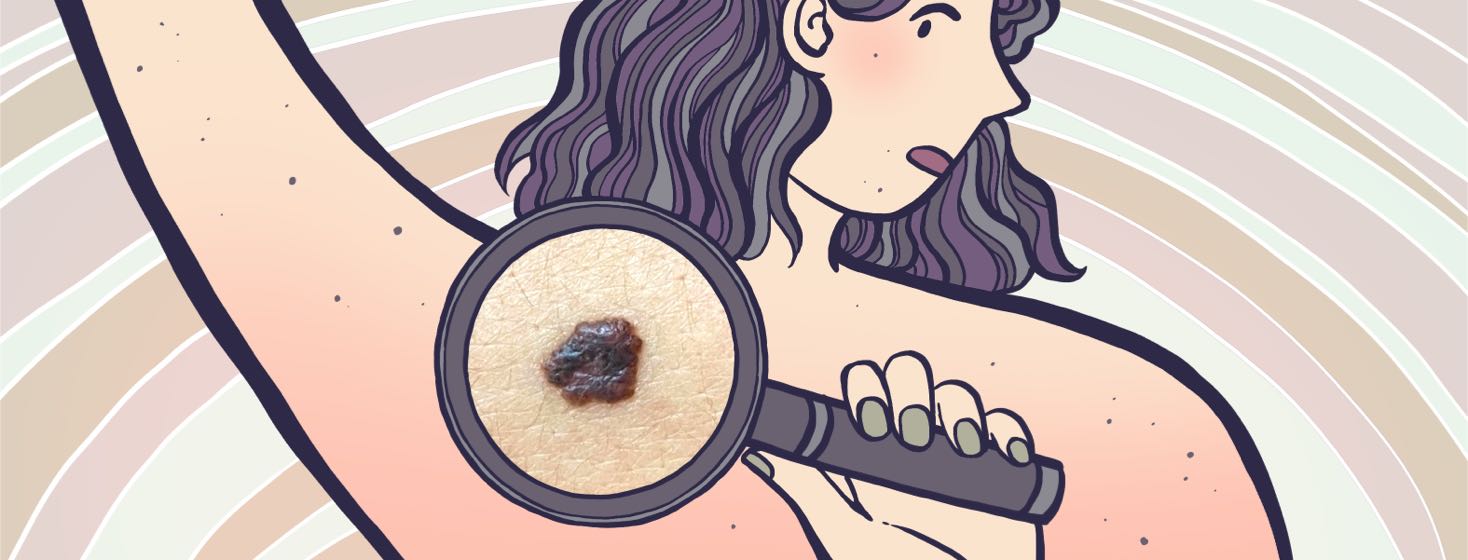How to Perform an At-Home Skin Cancer Self-Examination
Early detection is paramount when it comes to skin cancer. Yes, it is imperative to see your dermatologist, but there is a way you can do a skin cancer self-exam at home. Here is how to do a skin cancer self-exam, and get a head start in case you need further examinations and treatment.
Why early detection is important
Skin cancer is the most common type of cancer in the world. The good news is that it is seen on the outside. This means you get a visible look at any changes in your body that need addressing. Since skin cancer is treatable, early detection is crucial in getting the best care possible.
Early detection is especially crucial when it comes to aggressive skin cancer
When it comes to more aggressive forms of skin cancer, the American Academy of Family Physicians states, "Aggressive local growth and metastasis are common features of malignant melanoma, which accounts for 75 percent of all deaths associated with skin cancer. Early detection greatly improves the prognosis of patients with malignant melanoma." So whether it’s non-melanoma, or more aggressive skin cancer, early detection means the difference in healing, treatment, and better chances of a favorable outcome with all cancer being removed.
How to perform a skin cancer self-exam
The good news is that you can learn how to do a skin cancer self-exam at home to try to detect suspicious spots on your own. This does not negate a visit to your dermatologist. It makes it easier to share with your doctor what you have found, if anything. It can also lead to an early diagnosis and preemptive treatment.
Your face
Use a mirror and check your nose, mouth, lips, and ear. These are common places for skin cancer.
Your scalp
For this part of the self-exam, you may need help. Using a blow dryer, move your hair around to check the scalp thoroughly. Look at one section at a time, or have a friend or family member check the exposed areas.
Your hands
Look in places you wouldn’t normally think, including under the fingernails, between the fingers, and on the palms. Also check the back of your hands, wrists, and both sides of your forearms.
Arms
Look at your arms all the way around, including the underarms, sides, elbows, etc. It may be easier to use a full-length mirror for this inspection.
Torso
A mirror will be helpful for this inspection too. If you have breasts, be sure to lift them to check underneath. Don’t forget the entirety of your torso, neck, and chest.
Upper back
When looking at the upper back, include the shoulders, neck, and upper back. Use a hand mirror or get help from someone to aid you in a thorough check.
Lower back
Just like the upper back, use a hand mirror or employ help. Examine the buttocks, lower back, and the backside of both of your legs.
Legs and genital area
Last but not least, your legs should be inspected. But this includes more than just the legs themselves. Sit in a chair with each leg propped up. Check your genital area, front and back of the legs, and then your feet, including the toes, nails, and soles of your feet.
What to look for
When doing the skin cancer self-exam, look for the following:
- First, look for anything that is unusual or new. These suspicious spots should be scrutinized more thoroughly. This includes any kind of growth you haven’t seen before, or one that has gotten larger. This also includes spots that appear multicolored, tan, brown, transparent, or pearly.
- The same thing goes for a mole that you've had for awhile. If it has increased in size, have it checked. In fact, any changes are of concern. This includes a different shape or color. Even a change in thickness is suspect.
- Lastly, look for a sore that won’t heal or a spot that bleeds, scabs, crusts over, or itches continually.
It's easy to learn how to do a skin cancer self-exam at home. It's important to always be aware of what's going on with your body.
What questions do you have about performing an at-home skin cancer self-examination? Leave your questions in the comments section

Join the conversation